How to Give Dead Animals a Second Life: The Art of Skeleton Articulation
Mike deRoos and Michi Main build beautiful models from the remains of Pacific sea creatures
/https://tf-cmsv2-smithsonianmag-media.s3.amazonaws.com/filer/00/c2/00c2eb73-cf1d-4356-9840-9d5ca9a0104a/dsc_0285.jpg)
Even for someone unfamiliar with mustelid anatomy, the skeleton hanging above the stairwell in the dining hall of Hakai Institute’s Calvert Ecological Observatory can clearly be identified as a sea otter. Unlike the skeletons one normally meets in scientific research facilities, nothing about this otter feels morbid. The animal poses playfully, its tail arced over it as if it were swooping up from the seafloor. Attached to its paws with transparent filaments is the skeleton of a sea urchin, one of its dinners of choice. For something obviously dead, the sea otter seems charmingly animated.
In its first life, the otter was an old male, known to hang around Calvert Island in British Columbia (about 250 miles northwest of Vancouver). The otter belonged to a population of 1,000, which has rebounded in the past three decades after more than 100 years of being regionally extinct due to fur trade. That the otter would wind up in the hands of the very biologist studying his kind was a matter of extremely good luck.
“Most of the outer coast of Calvert, where a carcass is more likely to wash up, is inaccessible and rarely visited,” said Josh Silberg, science communications coordinator for Hakai Institute, by email. “In the case of the otter [found on Seventh Beach], Hakai’s marine mammal biologist Erin Rechsteiner was serendipitously on the island.”
The scientists carried the 90-pound otter back to the lab for a necropsy to determine the cause of death—likely a tooth infection. From there, the otter could begin its second life: part art, part science, part tribute to its species. And it all started with the work of Mike deRoos and Michi Main, skeleton articulators for a small company they call Cetacea on British Columbia’s Salt Spring Island.
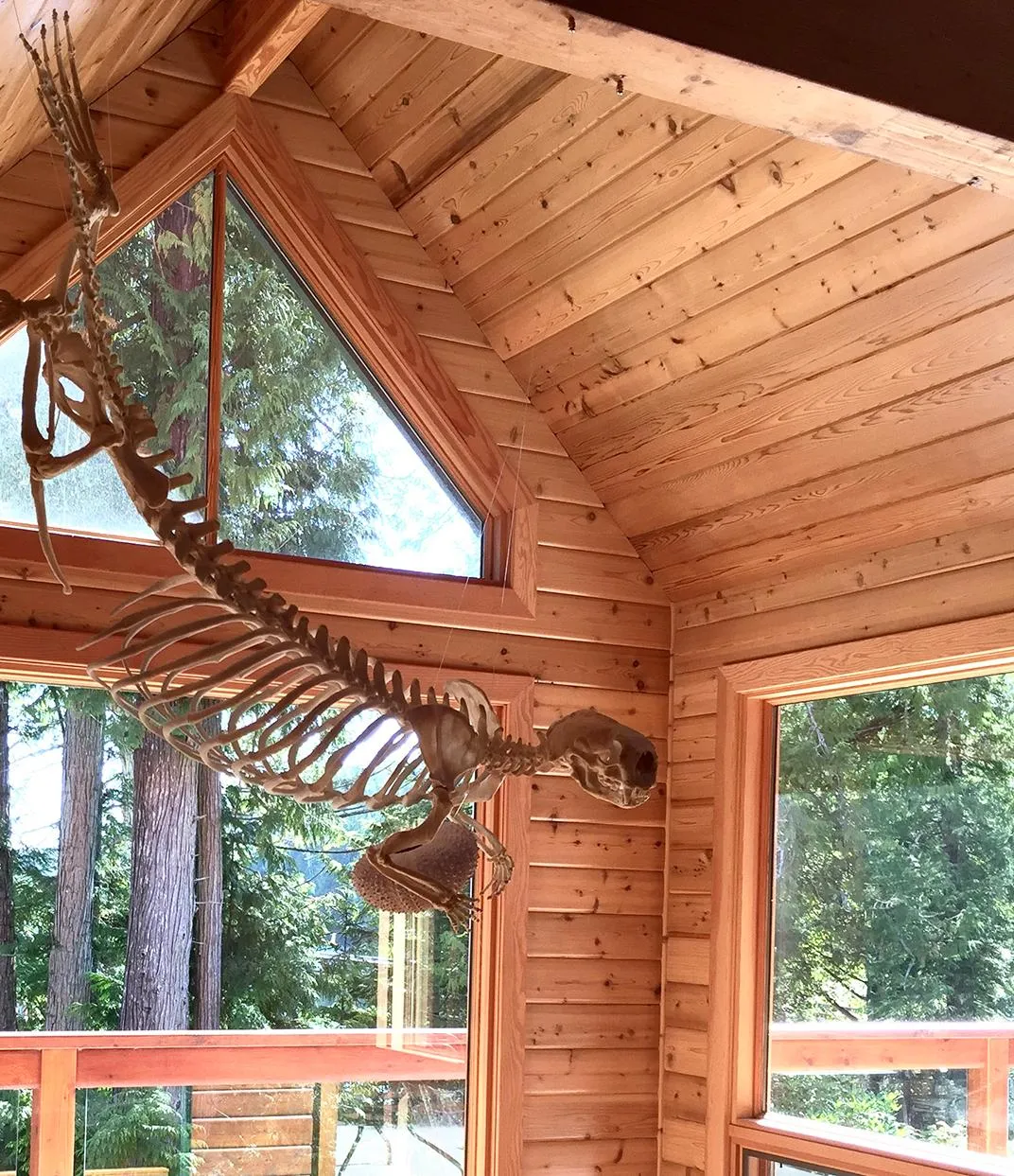
“Every death can be a tragedy, especially for endangered orcas and other animals that I work with,” deRoos says. “I want to try and get the greatest benefit out of displaying their skeletons in terms of educating and inspiring people to hopefully start caring about [the animals] and their environment.”
But getting to that point in his work has been a long process. The first time deRoos ever articulated a skeleton was as a biology student more than a decade ago. Though he assembled the bones in an anatomically correct position, the animal (another sea otter) mostly just looked dead. “My first few skeletons were like that,” deRoos says. The sentiment is echoed by Main, his wife and business partner.
“If you look at some of the older skeletons, historically they were articulated however they had been found—which is dead,” Main says. Now, both she and deRoos aim to bring elements of the animal’s behavior and environment to its skeleton. Each animal is an opportunity to tell a story.
Humans have been fascinated with bones for centuries, from British geologists who thought dinosaur bones came from giant humans to the Dutch anatomist Frederik Ruysch who made eerie dioramas using the bones of deceased children. The famous Parisian Gallery of Paleontology and Comparative Anatomy holds the skeletons of hundreds of creatures—from bats to hippopotamuses—and the bones of ancient butchered animals can give us a peek into the lives of our human ancestors.
For deRoos and Main, an interest in skeletons stems from a lifelong passion for science. Both pursued degrees in biological or environmental science, and both reveled in the marine environment of British Columbia. But skeleton articulation wasn’t an obvious career, even after deRoos completed his first few projects (he was the first of the two to start this line of work, and was joined several years later by Main). There were few people in the profession who focused on marine mammals, though deRoos did benefit from the instruction manuals of Lee Post, who articulated whale skeletons in Alaska.
But soon deRoos and Main were getting more regular work, especially whales. The enormous aquatic mammals come with a particular set of challenges, from breaking down the carcass to reassembling all the heavy bones. The process takes more than a year and a half, from finding the animal to assembling it. First, deRoos buries the bones in a pile of manure to expedite the decay process and remove all remaining flesh (though there are a number of possible methods for this, including placing the bones in “bug chambers,” where beetles eat the decaying flesh). Next comes degreasing, since whale bones are infamously oily. Only when the bones are clean and in decent shape—no broken bones or large missing notches—can Main and deRoos start piecing them back together.
For whales, the challenges come with the enormous size of the bones and the more precise details of which direction certain bones should be angled—the ribs, for instance. (In addition to otters and whales, they’ve also done Steller sea lions and a harbor seal). For smaller mammals, like otters, size is again a problem. Main described using a dremel machine to reshape the wrist bones for the sea otter, and watching the tiny fragment spin away if she hit it wrong. "It would fly across the room, then we’d spend 45 minutes looking for it,” Main says of her experience with the Hakai skeleton.
DeRoos agrees that the sea otter required “a lot of very finicky, detailed work,” especially when it came to assembling the bones of the paws.
But the two don’t always have to work alone. DeRoos was part of a team that assembled a 100-year-old blue whale skeleton for the London Natural History Museum this past January, and he and Main joined Lee Post and a group of volunteers in articulating an orca in California at the Noyo Center this summer.
“We were able to take the project to a different level of mentorship and work as a team, and the skeleton is just stunning,” Main says. The resulting skeleton shows a dynamic figure diving downwards, its jaws filled with sharp teeth and spread wide as if preparing to bite into fish. The 26-foot-long orca is now the largest skeleton of its kind on display in the world.
Using ecological science to understand the animals is what gives Main and deRoos the artistic license to position the skeletons the way they do. “I try to do as much research as I can on exactly how the animals move and what they do in their environment,” deRoos says. “That’s where it starts in designing the postures and deciding what they’re going to look like.”
But flexibility is required alongside creativity, because manipulating large skeletons requires cleverly constructed metal and wire frames. DeRoos has his experience in construction, having worked with his father in that business earlier in his career, and can apply those skills to his new articulation work. He compares it to being an engineer and finding the most elegant solutions to problems of display.
For Main, it all comes down to the spark of excitement visitors get when they witness the skeletal creations. “These creatures are so elusive,” she says. “You can spend days and days watching them from the surface of the water, but to be able to dive in with your imagination—it brings us closer to an understanding of what its life is like.”
Reporting made possible in part by the Institute for Journalism & Natural Resources.
/https://tf-cmsv2-smithsonianmag-media.s3.amazonaws.com/accounts/headshot/lorraine.png)
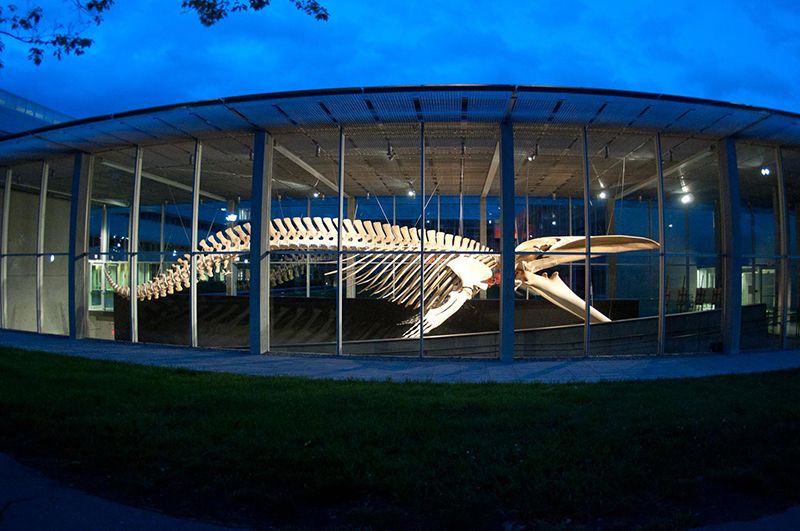
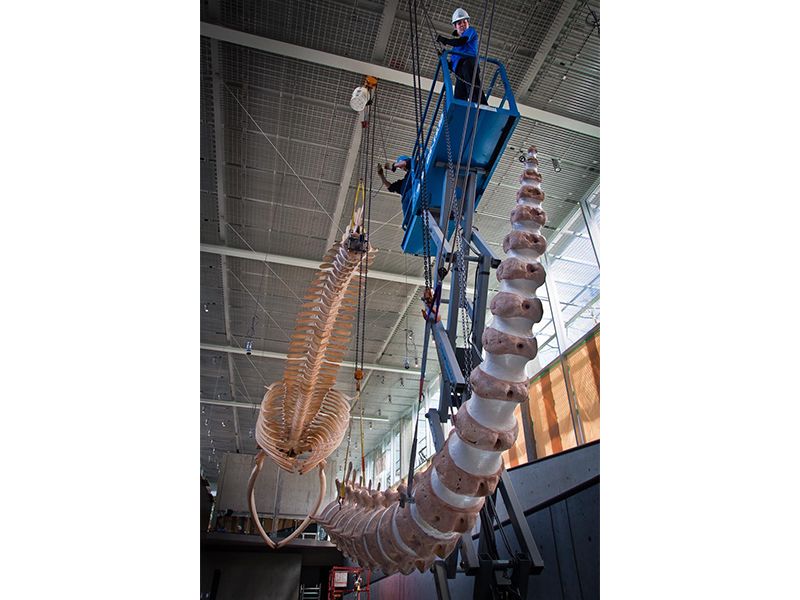
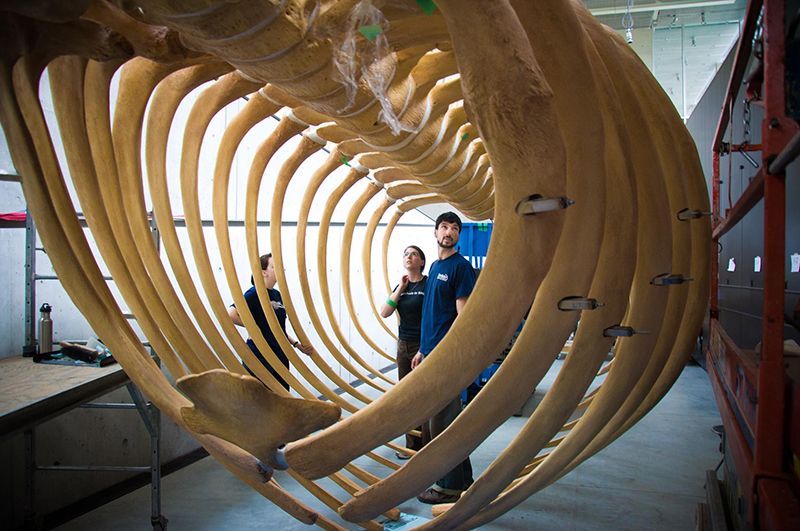
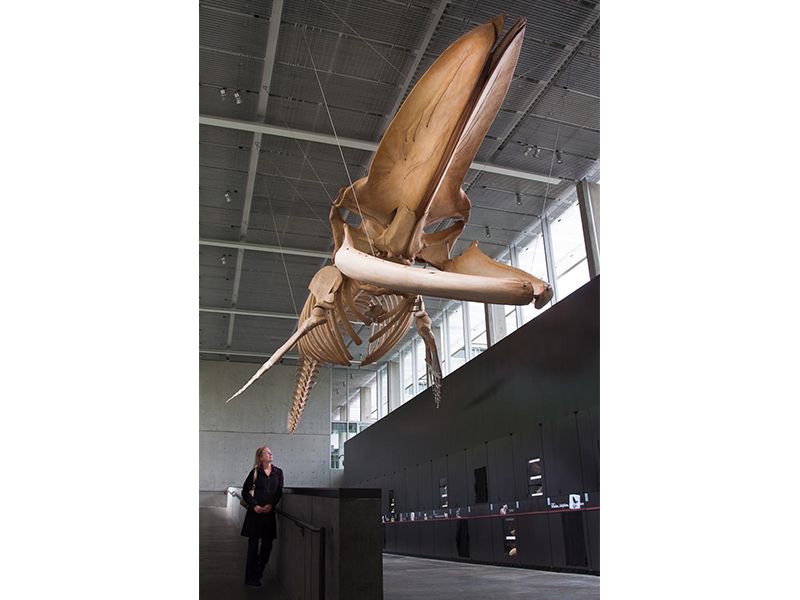
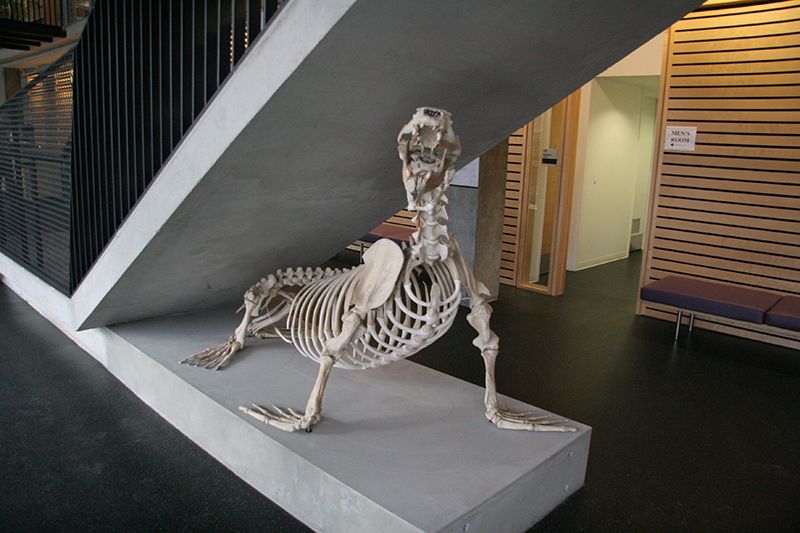
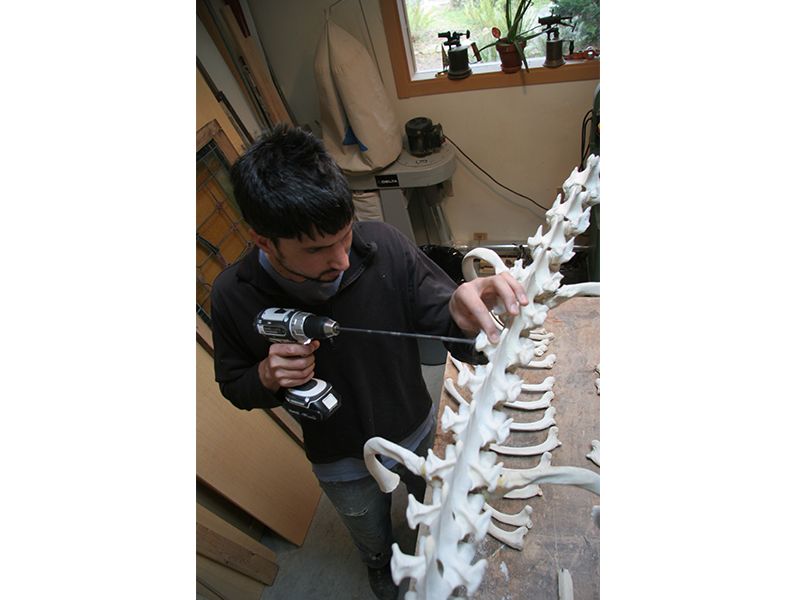
/https://tf-cmsv2-smithsonianmag-media.s3.amazonaws.com/accounts/headshot/lorraine.png)